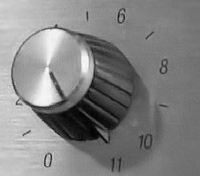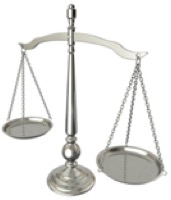Twitter HashTags
19 Feb 2009Twitter seems to have become really big in the UK all of a sudden. Stephen Fry has been leading the way for some time, but lately there have been a whole slew of celebrities tweeting away raising the awareness and popularity of the system.
So for those of you who have not come across Twitter before, it is a micro blogging web site that allows you to post short messages (140 characters) to a page on the Internet. I usually describe it as being like a public SMS message. You can post from the Twitter site, from applications on your computer or mobile phone - its quick and easy. Easy post is known as a Tweet and you can choose to follow other people’s Tweets so there’s a bit of a Facebook like element to it in that sense.
So this gives rise to communities who find other people who are Tweeting about similar things - for instance I have a few people who started following the RebootIT Twitter feed after I posted on Microsoft Tag and QR Codes a little while back. So if you’re looking to find like minded individuals with similar interests and keeping up to date with a particular field Twitter is another string to your bow.
Now this post is really aiming to look in more detail at something known as hashtags (or#hashtags / hash tags). Historically this is a concept borrowed from instant messaging where a theme is tagged with a special keyword. These keywords are identified by a “#” prefix … hence the name.
A word of warning at this point before you start hash tagging every tweet. They are really a kind of meta data and as Dave Coustan discusses on his blog meta data is something which generally describes the data and is not part of it … which by the necessity of Twitter’s limits hashtags. So if you are going to use them I would recommend just using one hashtag in a post and make sure you only use them on posts that are interesting to a community. Think - what would you be looking for if you were using that hashtag?
So with that in mind it’s also worth undertaking an additional step before you begin adding hashtags to your posts. There is a site called hashtags.org that acts as a hashtag monitor. To enable it for your tweets, you need to start following the hashtags.org Twitter feed. They will automatically start following you which will allow hashtags.org to pick up your hashtags from your tweets.
hashtags.org then allows you to check activity and view an aggregated Twitter feed for the tag at http://hashtags.org/tag/***** where the asterisks would be replaced by your tag. For example the BBC have been tagged unsurprisingly as #bbc so the hashtags page for it is http://hashtags.org/tag/bbc.
The use of hashtags.org does have an unfortunate reliance on those tweeting to have started following hashtags on Twitter … but then again if they weren’t following hashtags you would probably have to explain hashtags to them in the first place.
Whilst it gives you a nice activity graph and an option to produce an RSS feed for the tag, Twitter’s own search allows an aggregation of tweets containing a hashtag to be produced and again an RSS feed can be obtained … there’s just no nice activity graph. This obviously has the benfit that not all uwers who are tweeting using a hashtag need to be following hashtags on Twitter - hence you’re likely to capture more Tweets that are relevant.
As an example take a look at #bbc on Twitter search: http://search.twitter.com/search?q=%23bbc
Note that when you enter “#” in as a URL (web site address) it gets converted to a numeric code (ASCII) - %23.
Interestingly hashtags have become more commonplace at conferences and events as they provide a way for people who are at an event to tweet about the event, add the hashtag and then Twitter search (or hashtags.org) can be used to provide a live feed of the tweets coming through which can then be projected onto a screen at the event reception, breakout area or even during a keynote (to give feedback, ask questions, etc.)
So that’s the premise, now for some recommendations on using them:
1. Multiple hashtags
You can actually add more than one hashtag to a Tweet, but my personal view is that if you can add more than one hashtag into a 140 character post then you’re probably not posting about multiple topics so it probably isn’t worth reading. Keep to one hashtag and I think you’ll have most success.
2. Placing hashtags
Hashtags can appear anywhere within a Tweet. I would recommend placing your hashtag at the end. This is polite as people reading the Tweet will know what it is about by the time they have read to the point where the “#” appears. It may appear to be trivial, but to my it is simply a good example of Twitter etiquette (also known as Twittiquette).
3. Choosing hashtags
When choosing a hashtag it is worth doing a quick Twitter search first to ensure you aren’t going to pollute an existing hashtag aggregation (again bad Twittiquette).
Make sure your hashtag is short and memorable. The shorter it is the more people are likely to use it as it is then quick to add to a Tweet and it allows them to produce longer Tweets.
If you have something time bound (e.g. an annual event) consider adding a two digit year to the end of the hashtag. Keep the overall tag short in length, but then you can increment the tag for years to come.
4. Tweet it
When you have selected your hashtag make an initial Tweet that describes what it is, or why you created it. This way it kind of stakes your claim to it and sets it up ready so that others will probably feel better about adding it to their Tweet (no one likes beinig first). If you have some other interested parties get them to Tweet to it soon after to … but be careful not to get them all in there in the first couple of minutes otherwise it just looks really fake and people will lose confidence in using it.
Why not start with something like…
It isn’t long now until the 2009 Mega Thing. Are you going? #MEGA09
5. Publicise your hashtag
Make sure that whatever you are using your hashtag for that you include it in any literature relating to it. If it is for an upcoming event make sure people get it before the event so that they can begin Tweeting about it before it happens and help build up ‘the publicity’.
Get it on your web site, posters and anything else.
People are looking for that more engaged, immersive and connected experience and hashtags are something that can potentially help provide that. Why not give it a try for your next event?
 Scroll the menu to find all the places to visit
Scroll the menu to find all the places to visit


